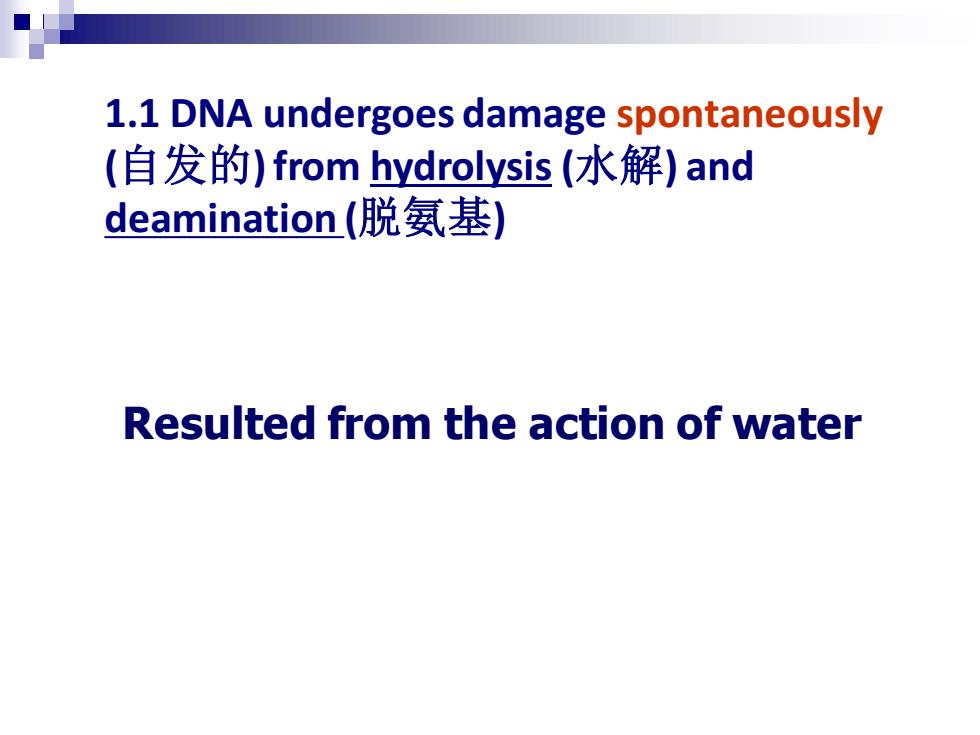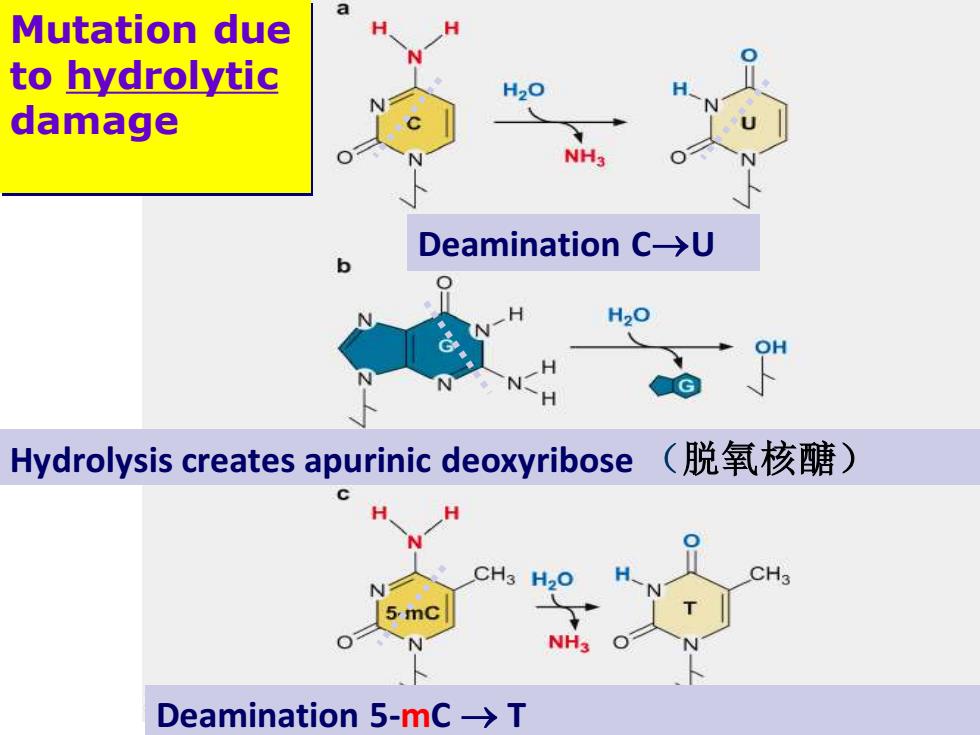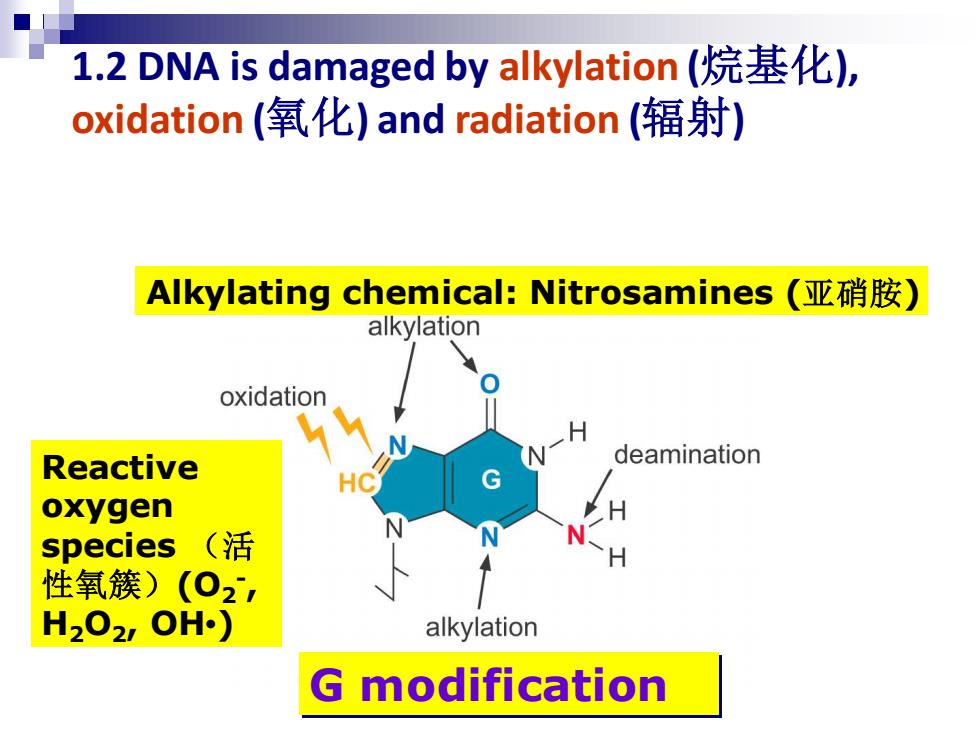
Section 1: The types and causes of DNA damage
Section 1: The types and causes of DNA damage

1.1 DNA undergoes damage spontaneously (自发的)from hydrolysis(水解)and deamination(脱氨基) Resulted from the action of water
1.1 DNA undergoes damage spontaneously (自发的) from hydrolysis (水解) and deamination (脱氨基) Resulted from the action of water

Mutation due to hydrolytic damage N Deamination C-→U H2O or Hydrolysis creates apurinic deoxyribose(脱氧核醣) CH3 I N 5mC NH Deamination5-mc→T
Mutation due to hydrolytic damage Deamination C→U Hydrolysis creates apurinic deoxyribose (脱氧核醣) Deamination 5-mC → T

Vertebrate(脊椎动物)DNA frequently contains5'- methyl cytosine(5'-甲基胞嘧啶)in place of cytosine as a result of the action of methyl transferase 转移酶),This modified base plays a role in the transcriptional silencing The presence of U and apurinic deoxyribose in DNA resulted from hydrolytic reactions is regarded as unnatural,thus is easily be recognized and repaired. Can 5-mC->T lesion be repaired? 5-mC->T mutations are hotspots for spontaneous mutations in vertebrates
The presence of U and apurinic deoxyribose in DNA resulted from hydrolytic reactions is regarded as unnatural, thus is easily be recognized and repaired. Can 5-mC → T lesion be repaired? Vertebrate(脊椎动物)DNA frequently contains 5’- methyl cytosine (5’-甲基胞嘧啶)in place of cytosine as a result of the action of methyl transferase (甲基 转移酶). This modified base plays a role in the transcriptional silencing . 5-mC → T mutations are hotspots for spontaneous mutations in vertebrates !

1.2 DNA is damaged by alkylation(烷基化), oxidation(氧化)and radiation(辐射) Alkylating chemical:Nitrosamines(亚硝胺) alkylation oxidation Reactive deamination G oxygen species(活 性氧簇)(02 H202,OH) alkylation modification
1.2 DNA is damaged by alkylation (烷基化), oxidation (氧化) and radiation (辐射) G modification Alkylating chemical: Nitrosamines (亚硝胺) Reactive oxygen species (活 性氧簇)(O2 - , H2O2, OH•)